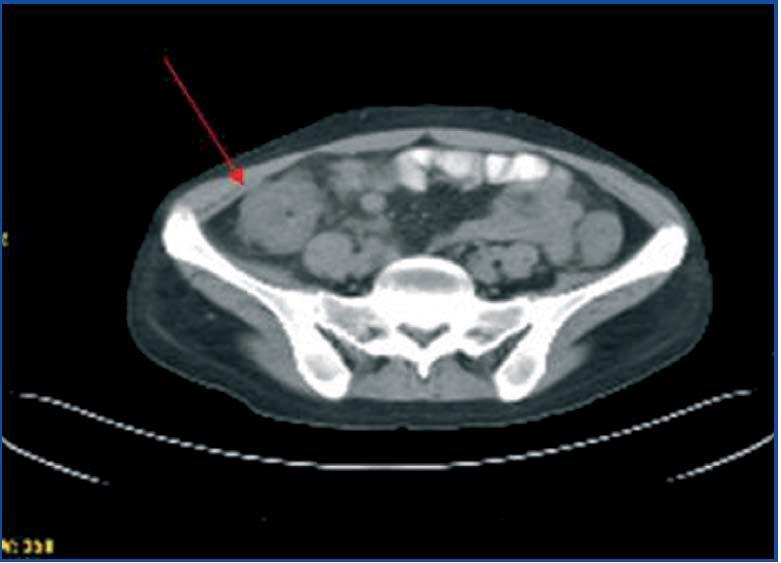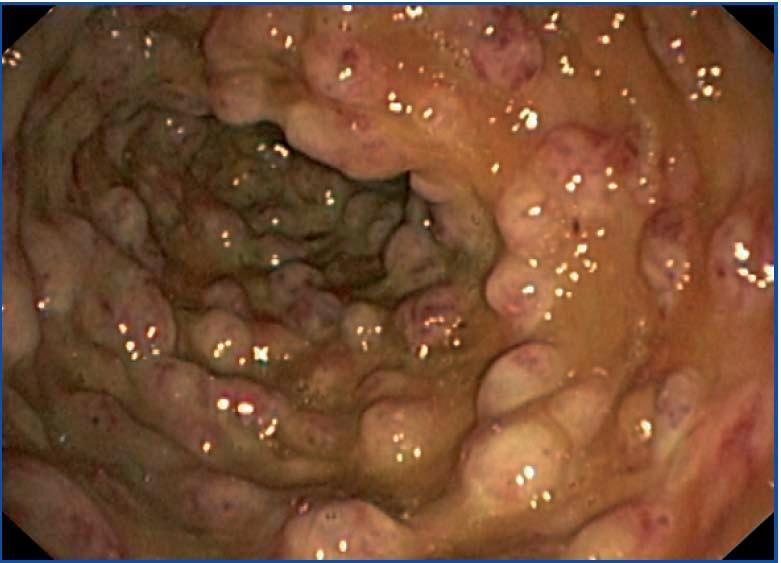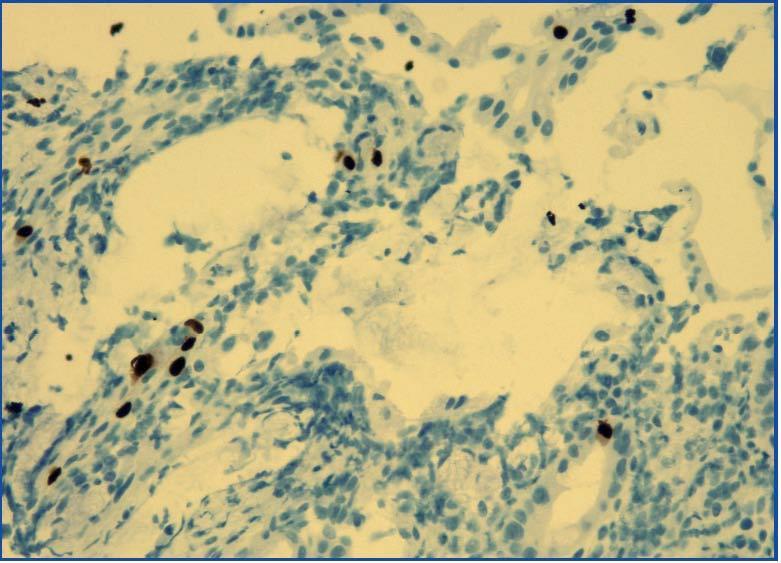To the Editor,
Our patient was a Bolivian woman diagnosed with systemic lupus erythematosus (SLE) in 2003. In July 2008, she developed type IV lupus glomerulonephritis and treatment was started with i.v. methylprednisolone followed by oral prednisone at doses of 1mg/kg/day and mycophenolate mofetil (MMF). She was hospitalised for a month due to respiratory symptoms. Nocardiaspp were isolated from the sputum culture, antibiotic treatment begun and immunosuppressive medication was reduced.
During hospitalisation, the patient developed fever, abdominal pain, vomiting and diarrhoea. Culture studies, parasite study, identification of Clostridium difficile toxin and antigenaemia for cytomegalovirus (CMV) were performed on two occasions, and the results were negative. An abdominal CT (Figure 1) showed a thickening of the wall of the colon with occlusion of the lumen from the cecum to the rectum-sigmoid junction, which was compatible with diffuse pancolitis. A fibrocolonoscopy was requested (Figure 2), which revealed oedematous mucosa with multiple soft nodular lesions compatible with pneumatosis coli. The colon biopsy revealed viral inclusions which were confirmed for CMV by immunohistochemistry (Figure 3). The third antigenaemia determination for CMV was positive and the definitive diagnosis was CMV colitis. Treatment with i.v. ganciclovir was begun and the MMF treatment withdrawn, with clinical improvement and a negative antigenaemia for CMV.
SLE is a chronic autoimmune inflammatory disease of unknown cause with a wide variety of clinical presentations.
It is characterised by an alteration in the immune system which involves the synthesis of autoantibodies and the formation of immune complexes which cause tissue damage, along with the action of inflammatory mediators.
Lupus disease itself and the use of immunosuppressive agents increase the risk of opportunistic infections causing increased morbidity and mortality. In general, patients have bacterial infections, however, there is an increase in viral infections, due especially to CMV, but also to human parvovirus b19, simplex herpes, varicella zoster and hepatitis A.1
Viral infections may have symptoms identical to those of SLE, such as malaise, fever, arthralgia, a rash, lymphadenopathy and cytopaenias, so it may be confused with an outbreak of SLE.2,3 This may lead to increasing immunosuppressive therapy, thereby worsening the latent infection.
In our case, the patient developed an invasive CMV disease despite reducing the immunosuppressive treatment. The persistence of abdominal symptoms without encountering an infectious cause, the finding of non-specific lesions in the colonoscopy and reduced immunosuppression, made us suspect that it was an outbreak of SLE with abdominal affectation. The anatomopathological study allowed us to make the diagnosis of CMV colitis, and administer appropriate treatment to prevent further immunosuppression.
We believe it important to maintain a high degree of suspicion for both bacterial and viral opportunistic infections that mimic outbreaks of lupus disease in immunosuppressed patients. They will benefit from prompt diagnosis and appropriate treatment.
Figure 1. Abdominal TC
Figure 2. Fibrocolonoscopy
Figure 3. Colon biopsy











